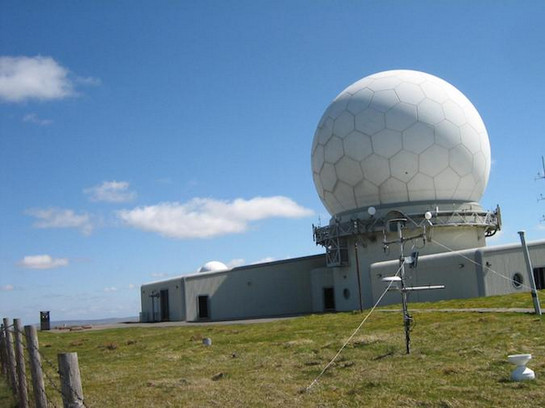Overview
NATS can object to planning applications for tall buildings, wind farms and other developments. NATS consultation can help developers avoid NATS objections to local planning authorities when applying for planning permission.
Pager Power can help developers avoid objections through early NATS consultation. Typically NATS objections can be raised because of a predicted impact on radar, aeronautical beacons or airports.
Benefits of NATS Consultation
NATS are often consulted by local planning authorities as statutory consultees after planning applications are made. Objections at this late stage of the development process can often catch developers out. It is usually beneficial to undertake NATS consultation prior to submission of any planning application so that any potential issues can be addressed before the planning application is submitted.

Figure 1: NATS Great Dun Fell Radar Station
NATS Consultation Topics
NATS consultation typically relates to a development’s impact on:
- Primary Surveillance Radar (PSR)
- Secondary Surveillance Radar (SSR)
- Aeronautical Navigation Beacons (Navaids)
- Airports (Obstacle Limitation Surfaces – OLS)
Typical Impacts
The table below summarises the typical impacts considered via the NATS consultation process:
Primary Surveillance Radar
NATS raise many objections to onshore and offshore wind farms that fall within radar line of sight of their Primary Surveillance Radar (PSR). The radar that cause most objections are in the north of England and Scotland. The main ones are Lowther Hill, Perwinnes, Great Dunfell and Claxby.
Secondary Surveillance Radar
NATS often object to tall buildings in city centres (particularly London and Manchester) or smaller buildings closer to its radar sites (for example Blackpool, Gatwick and Aberdeen). It often requires a radar mitigation agreement to reduce the effects of building developments on its radar.
NAVAIDs
Buildings, wind turbines and other developments can interfere with radio signals from radio navigation beacons known as NAVAIDs. The most sensitive type of aeronautical radio navigation beacon is known as a Doppler VHF Omnirange (DVOR).
Obstacle Limitation Surfaces (OLS)
Tall developments can adversely impact air traffic through their physical presence. A system of physical safeguarding – known as Obstacle Limitation Surfaces (OLS) – is used to protect airport runways. OLS breaches are particularly prevalent near airports in hilly locations – for example Aberdeen, Glasgow and Belfast International.
Pager Power
Pager Power is a specialist consultancy that can help developers manage potential planning objections by assisting with NATS consultation and by assessing developments’ impacts on NATS infrastructure. To find out more contact us on 01787 319001.
References
Image accreditation: https://commons.wikimedia.org/wiki/File:Dunn_fell_radar_station.jpg

